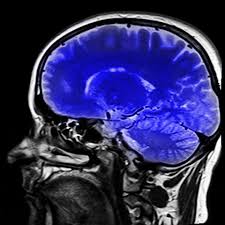The final requirement for my Masters in Creative Writing program at Lesley University is to teach a graduate student seminar, and I’ve chosen a topic that merges my two great passions in life: biology and writing. More specifically, neuroscience and literature. I’m going to drop a little science on my fellow writers next week by teaching them three inescapable brain hacks they can employ to suck readers into their stories.
It occurred to me that these neuroscience hacks would make some cool blog posts. Today’s neuroscience hack is subtle but incredibly useful.
Brain Hack #1: The human brain evolved to monitor the immediate environment for signs of change.
 It’s true! From an evolutionary standpoint, the brain is an organ with a singular purpose. To keep us alive. An essential part of “not dying” is noticing any kind of change to the current situation.
It’s true! From an evolutionary standpoint, the brain is an organ with a singular purpose. To keep us alive. An essential part of “not dying” is noticing any kind of change to the current situation.
Change grabs our attention as we assess whether it is positive or negative. The brain then forms a “survival goal” based on the conclusion and takes steps to achieve that goal. It could be as simple as putting on a sweater when the temperature drops. Or eating food when blood glucose levels fall. Or running for cover when a strange shadow shifts position in the tall grasses of the African savannah.
Changes such as a hulking figure with a knife stepping from a shadowy alley come with potentially extreme consequences. Experiencing that situation firsthand could mean death. Thankfully, our brains developed workarounds that let us gain knowledge and experience safely.
We have the somewhat unique ability to learn by watching others deal with problems.

Whether the observed individual lives or dies, we gain knowledge that might keep us alive should we encounter a similar problem.
When we read fictional stories, we get to practice identifying changes and assessing their potential positives or negatives.
In 2007, researchers found that when people read stories, there is a significant increase in brain activity during narrative moments containing changes in characters, scene locations, or changes in characters’ goals.
Changes that Really Light Brains Up:
- Words that suggest the passage of time, such as later, soon, shortly, or immediately.
- Descriptions of spacial changes, such as characters moving from one room to another, or even moving from one side of a room to another.
- Descriptions of characters changing their interaction with objects (picking up or putting down objects, or opening or closing things like doors or windows).
- Showing characters starting a new, goal-oriented action with a clear intent. For example, initiating a conversation, preparing to jump over a puddle, or thrusting a sword during a fight.
Consider the following excerpt from Cressida Cowell’s middle grade novel How to Train Your Dragon: 
The Dragon had crawled down into the depths of the ocean and gone into a Sleep Coma. Dragons can stay in this suspended state for eternity, half-dead, half-alive, buried under fathom after fathom of icy-cold seawater. Not a muscle of this particular Dragon had moved for six or seven centuries.
But the previous week, a Killer Whale who had chased some seals unexpectedly deep was surprised to notice a slight movement in the upper eyelid of the dragon’s right eye. An ancestral memory stirred in the whale’s brain and he swam away from there as fast as his fins could carry him. And, a week later, the sea around the Dragon Mountain—which had previously been teeming with crabs and lobsters and shoals and shoals of fish—was a great, underwater desert. Not a mollusk stirred, not a scallop shimmied.
Admit it, that’s some engaging writing. One of the reasons why it pulls you in so fast is because it contains so much change. Your brain locks onto the text as it tries to figure out whether those changes are good or bad. Cowell employs another interesting neuroscience hack in this excerpt, too, but that’s a topic for another post.
Regardless of the quality of the actual story being told (Twilight? The Da Vince Code? Fifty Shades of Gray?), certain tricks can grab readers by the brain and engage them. Change is one of them. Take a look at your writing and see if adding a few elements of change livens things up a bit.
Have you ever gotten so into a book you were reading that you lost track of time and literally forgot about the real world? What was the book, and what was it that sucked you in so effectively?
Thanks for stopping by, and as always, happy writing to you!

Leave a Reply